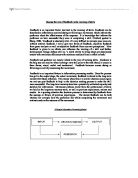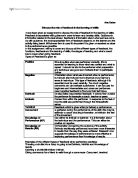What is feedback?
In sport feedback is crucial in knowing whether your efforts have resulted in improvement, and in order to learn a new skill or improve on one you need the correct type of feedback at the right time to progress. If this doesn’t happen the athlete may find it hard to progress, if not at all. When we play sport we are given a lot of different types of feedback from different sources and they come in different forms. These are mainly…
- Positive Feedback
- Negative Feedback
- Intrinsic Feedback
- Extrinsic feedback
- Terminal Feedback
- Concurrent Feedback
- Knowledge of results
- Knowledge of performance
Feedback is generally a technique of informing an athlete who is learning a new skill. It is used as a tool and is important for successful coaching and learning. Feedback can be positive or negative and is essential in the learning of a new skill because it will help an athlete have an indication of how well he/she is performing. In order for feedback to be done correctly it is essential that constant observations of their actions be monitored. Feedback is basically information from the environment, which informs the athlete about their performance during and following the movement. It acts as a motivator and this applies especially for learners.
There are three main methods of guidance in relation to learning a skill and they are…Visual guidance, Verbal Guidance and Manual Guidance. Guidance is an important factor in learning a new skill in sport as it reinforces feedback. Feedback is what the performer did, and guidance is how the performer can improve.
Visual Guidance is basically someone showing the learner how the skill is performed. This creates a mental image and helps the learner to get the idea of how to perform the skill.
Verbal Guidance is basically when the teacher/coach describes the action involved or how the skill is performed.
Manual Guidance is when the coach/teacher actually aids the learner physically to perform the task. An example of this would be in gymnastics when the teacher helps an athlete perform a summersault.
Anyway, which ever form of feedback is used it is important that the feedback is accurate, concise and understandable so that the player can rectify his errors and stay focused on the task in hand.
Positive Feedback – positive feedback is when a person is given feedback on their performance with a successful outcome. This is basically when the positives are outlined and the negatives constructively criticised. The player then knows what to repeat for the next time they perform the skill with that particular action. With the positives then outlined it will boost their confidence and therefore help them to maintain their determination to be successful. This type of feedback is essential for beginners. If the performer was not told what they are doing or not doing correctly then the next time that they perform the skill they may do something incorrectly. This would then be a negative to positive feedback if given to the performer incorrectly.
Negative Feedback – Negative feedback is basically when a coach/teacher shows the performer what is wrong with their technique and how they can improve on it. This wouldn’t be just picking out weakness in a performers game. It also includes the correction of the fault. This feedback has to be used carefully though else the performer can become easily demotivated and even become hesitant when coming to amend their faults. This type of feedback can be used for professionals or at a amateur level. Overall though whether the feedback is positive or negative, it can take different forms…
Extrinsic Feedback – This type of feedback is basically verbal feedback from a coach or teacher. It consists of them telling a performer how they are performing. This is normally beneficial when the verbal statements are used properly. A disadvantage to this type of feedback though is that it cannot always be clear and therefore not enabling the performer to correct his skill properly.
Intrinsic Feedback – This type of feedback is one that comes from the performer to see how the skill was performed. An example of this would be a tennis player assessing their service after it has hit the net. This can also be quite a beneficial type of feedback as the performer can tell the coach/teacher their own view on how they performed the skill and the coach can then put his point forward to make sure the correct feedback is given.
Terminal Feedback – This type of feedback is basically received after the athlete’s performance or in some cases before. The information received by the athlete is of a direct result of producing a movement through the kinaesthetic senses - feelings that come from muscles, joints and balance. This also strengthens the schema in the memory.
Concurrent – This type of feedback is basically information provided to the athlete during the performance. This can be from either the performer or the coach and can be extrinsic – a coach shouting information at the performer, or intrinsic – the performer feeling the movements. This type of feedback is beneficial although a negative is that a teacher interrupting an athlete whilst training might make them lose concentration.
Knowledge of Performance – Knowledge of performance (KP) can be gained from feedback, coach, video or self-analysis about their performance or technique. This basically enables the athlete to establish a kinaesthetic reference for the appropriate movement.
Knowledge of Results – Knowledge of results (KR) is information that is to do with the result of an athlete’s performance. The results are given to the performer who then analyses them and compares them to previous performances.
Differences between knowledge of performance and knowledge of results
The difference between knowledge of performance and knowledge of results is basically that knowledge of results is different because it is only extrinsic information concerning the outcome of the skill or activity. Overall most athletes prefer knowledge of result rather then knowledge of performance.
Summary
Overall feedback is information, which tells the performer the result or outcome of their movement. It can come form different sources and can act in different ways and have many different effects depending on the person. With the correct guidance, feedback can be very useful to a performer.







